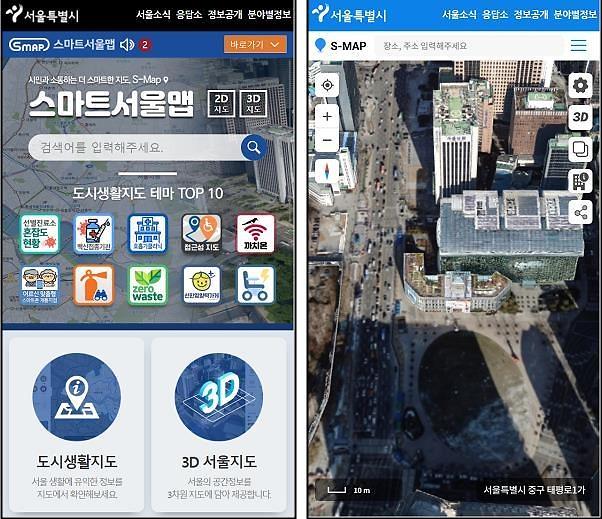
[Courtesy of Naver]
A digital twin is literally a digital clone of the real-world original. Sizes of the virtual clone vary from a Petri dish to a whole planet. Digital twins are created to put the clones in different situations such as a city struck by a massive tsunami or a building heavily shaken by an earthquake without damaging the original.
In June 2021, Naver's artificial intelligence, robot and autonomous technology wing, Naver Labs, unveiled "ALIKE," a digital twin development solution that can create digital cities using aerial photographs and high-definition maps. Naver Labs created a 605-square kilometer-wide three-dimensional map of Seoul with veins of roads and streets using ALIKE's technology.
Naver Labs CEO Seok Sang-ok said in a press meeting that his company would work with Softbank to produce high-density urban HD maps in Japan from the beginning of 2022. An unnamed Japanese city will be picked for a pilot project.
Naver Labs' hybrid metaverse ecosystem, ARCVERSE, organically connects to the real world based on a virtual space. "The biggest feature of ARCVERSE is that it is not an independent virtual space, but can form a digital world interworking with the real world with technology and organically connect the two worlds to provide users with an equal experience without space gaps," Seok said.
ARCVERSE connects reality and digital space by converging technologies such as artificial intelligence, robots, cloud, digital twin, 5G, autonomous driving, and augmented reality. What was ordered to robots in the virtual world can be directly connected and applied to reality.
"The elements that make ARCVERSE up can be one service or a completely new service through convergence," Seok said. "We hope ARCVERSE will be incorporated into each industry and lead to the birth of infrastructure and services that will make a paradigm shift."
Copyright ⓒ Aju Press All rights reserved.



![[INTERVIEW] Naver tests 5G brainless robot in worlds first robot-friendly building](https://image.ajunews.com/content/image/2021/09/01/20210901105605281847.jpg)
View more comments